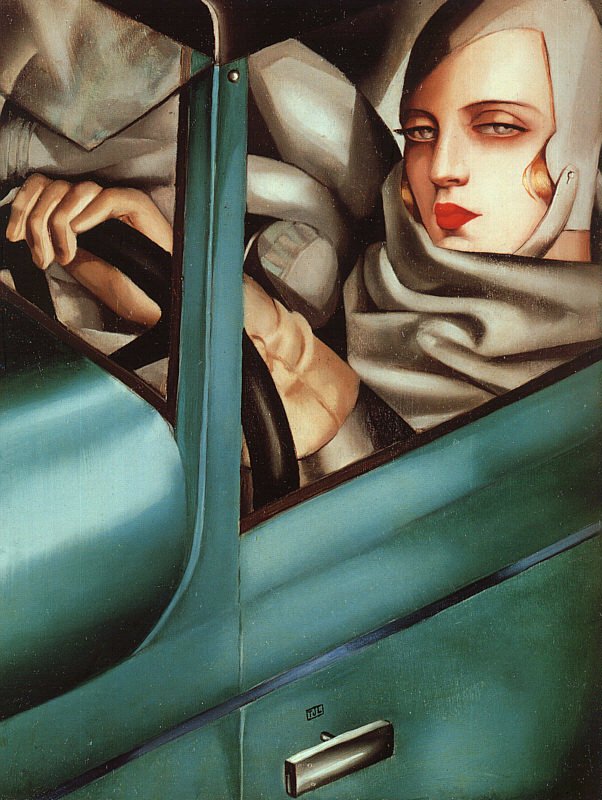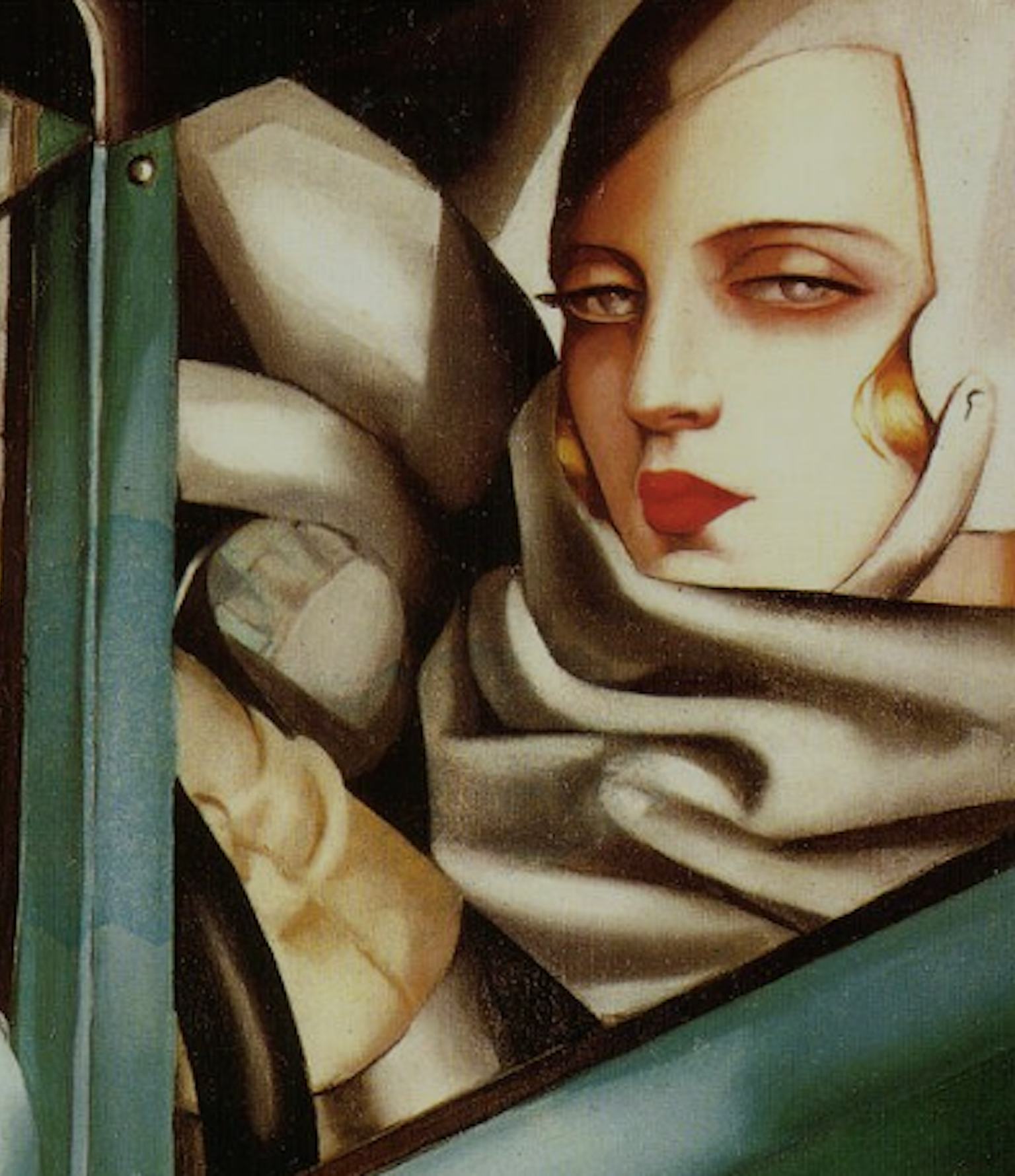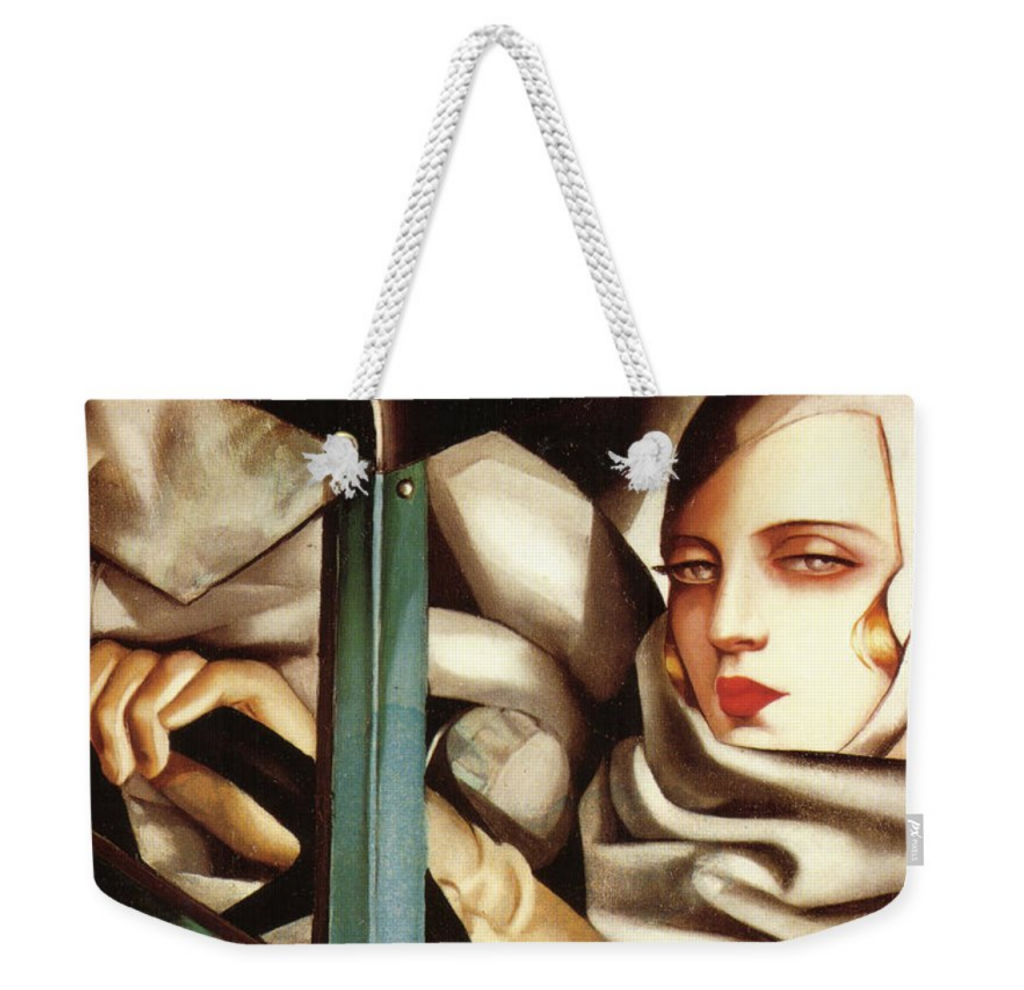
Tamara de Lempicka nő ecsettel, Bugattival
"Autoportrait (Self-Portrait in the Green Bugatti)" is the best known Lempicka piece. (Tamara de Lempicka Estate, ARS 2022) The audacity to legitimize her own gaze — within her work, among.

Self Portrait In A Green Bugatti Framed Print by Tamara de Lempicka
Try the eBay way-getting what you want doesn't have to be a splurge. Browse Bugatti'! Find the deal you deserve on eBay. Discover discounts from sellers across the globe.

Pin auf Artiful
As a result of this, Autoportrait (Tamara in the Green Bugatti) is a true emblem of the revindication and emancipation of women in the early 20th century. Tamara de Lempicka is seen as a strong and fashionable lady, confident and comfortable with herself, poetically conveying a very clear message: she is a woman, capable of driving her life.

TAMARA DE LEMPICKA. Autorretrato en un Bugatti verde. 1929. アート
Tamara de Lempicka was the lone traditional easel painter in the entirety of the Art Deco style. Her sources of inspiration ranged dramatically: she adored Italian Renaissance painting; she was characterized by critics as a sort of modern-day Ingres, although the comparisons were more often not intended to flatter; she absorbed the avant-garde art of the era - particularly post-cubist.

Homage of T. de Lempicka Tamara im grünen Bugatti i95629 80x110cm
Tamara de Lempicka can be seen, in some way, as the emancipated woman of the 20s par excellence. In her Self-Portrait in a Green Bugatti, de Lempicka paints.

tamaradelempickae28093autoportraittamarainagreenbugatti
Lempicka's lifestyle, one in which she flouted her sexual freedom, has made her something of a conundrum for feminist art historians.. Lempicka depicts herself sitting at the wheel of a green Bugatti sports car, wearing fashionable brown driving gloves, a close-fitting hat that resembles a helmet, and a scarf that billows in dramatic, sharp.

Tamara de Lempicka How Her 'Green Bugatti' Painting Defined an Era
Private Collection, Switzerland. Autoportrait (Tamara in a Green Bugatti) is a self-portrait by the Polish artist Tamara de Lempicka, which she painted in Paris in 1928. It was commissioned by the German fashion magazine Die Dame for the cover of the magazine, to celebrate the independence of women. It is one of the best-known examples of Art.

Adult Jigsaw Puzzle Tamara de Lempicka Tamara in the Green Bugatti
Lempicka spent the last two years of her life in Cuernavaca, Mexico. As the wheel turned yet again, interest began to revive in her paintings in the 1970s, most notably after the 1972 retrospective exhibition 'Tamara de Lempicka from 1925-1935' at the Palais du Luxembourg in Paris. By 1990, ten years after her death, Lempicka's early Art Deco.

In 1925, Lempicka painted her iconic work AutoPortrait (Tamara in the
Tamara de Lempicka is painted in a green Bugatti, a luxurious car at the time, in reality, she owned a small yellow Renault which she decided to replace for the self-portrait in order to convey a sense of wealth and high status. After all, she was now simultaneously playing the roles of both artist and socialite at a time when the Bohemian.

Larger Size* Portrait in the green bugatti Framed Print by Tamara de
In 1925, Lempicka painted her iconic work Auto-Portrait (Tamara in the Green Bugatti) for the cover of the German fashion magazine Die Dame. As summed up by the magazine Auto-Journal in 1974, "the self-portrait of Tamara de Lempicka is a real image of the independent woman who asserts herself. Her hands are gloved, she is helmeted, and.

Why Not Add an ArtInspired Accessory to Your Fall Look? This Online
Tamara de Lempicka is the main artist of the art deco movement. Her self-portrait in a green Bugatti was famously on the cover of Die Dame, a Paris fashion magazine.This episode is about her early life, her family, her infamous partying among the elite, and her impressive career and legacy.

SelfPortrait In The Green Bugatti by Tamara de Lempicka Printed on
Self-Portrait (Tamara in Green Bugatti) by Tamara de Lempicka, 1929, via Arthive The most famous artwork by Tamara de Lempicka is her self-portrait. It came as a result of a spontaneous meeting with the director of the German fashion magazine Die Dame. The director saw Tamara exiting her yellow Renault, wearing a matching dress and a hat and.

Tamara de Lempicka Green Bugatti Self Portrait Art Deco Etsy
Brotherhood [2018] Directed by: Meryam Joobeur. Written by: Meryam Joobeur. Produced by: Maria Gracia Turgeon, Habib Attia. Mohamed is deeply shaken when his oldest son Malik returns home after a long journey with a mysterious new wife. 'My Portrait (Self-Portrait in the Green Bugatti)' was created in 1929 by Tamara de Lempicka in Art Deco.

"SelfPortrait in Green Bugatti" (1925) by Tamara de Lempicka (1898
Self-portrait (Tamara in a Green Bugatti) is a painting of Tamara de Lempicka (colloquial name of Tamara Łempicka), which captures her at the very rise of her career and became her iconic image. Although this portrait also has a grain of fiction, just as her scandalous biography, which she reshaped to her discretion. Bugatti's immodest charm

SelfPortrait in the Green Bugatti, Tamara de Lempicka, 1925 [1280 x
Autoportrait (Tamara in a Green Bugatti) is Tamara Łempicka's most famous and most often reproduced work.. Although the artist usually signed her works as 'de Lempicka', this time she also used the Junosza coat of arms which belonged to her husband Tadeusz Łempicki. By portraying herself as sitting in a car - a vehicle which is.

Cecylia Dąbrowska Selfportrait in the green Bugatti by Tamara
DescribeThe artwork features a close-up view of a woman in the driver's seat of a car, framed by the open window of a vibrant green vehicle, potentially a Bu.